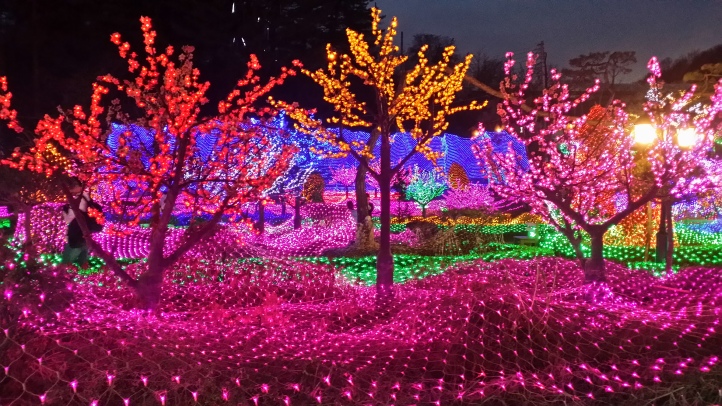If you watch a K-drama, apart from the characters, what do you most often see? I’m sure most of you will answer: brand names and corporate logos. Some of the most often seen scenes are the characters chatting in the coffee shops with the names of the coffee shops clearly displayed on the walls or doors or cups; or the characters are using trendy mobile phones with the relevant brand names or logos or the mobile apps that are being used receiving close-up shots. This is product placement (“PPL”), a form of indirect advertising used in K-dramas. Let’s continue the K-drama series by talking about this well-known (or notorious?) feature of K-dramas.
What is PPL in K-dramas?
PPL is a form of indirect advertising by displaying the brand names and corporate logos of the advertised products in the dramas. This can be done by merely displaying the relevant products in the dramas or (more often) the characters using the products in the dramas.
The range of products being placed in the K-dramas is really broad – apart from the usual coffee shops and mobile phones, you can find washing detergent, sneakers, chocolate, TVs, cameras, mobile apps, books, beverages, food, fashion, cars, cosmetics, convenience stores…the list seems endless.
PPL can be an effective way of promoting products, especially when the relevant drama becomes a hit. For example, for the hit drama “My Love from the Star” (별에서 온 그대), the lipstick used by the main actress was quickly sold out, and with the popularity of the drama in China, it also started a craze for fried chicken (the main actress’ favourite food) in China. American writer, Kate DiCamillo’s book “The Miraculous Journey of Edward Tulane” sold over 30,000 copies after its appearance in the drama – when it was first published in 2009, it did not receive much interest in South Korea.
Why is PPL so serious in K-dramas?
In fact, PPL is not unique to K-dramas. You may also find PPL in movies and dramas from other countries. However, PPL seems more serious in K-dramas – there are criticisms that K-drama is in fact a lengthy commercial advertisement. For example, it was noted that the 12 most-watched dramas in July 2013 on average placed 10 products in a 60-minutes episode.
One of the key reasons for rampant PPL is the change of law on TV advertising in 2010. In 2010, the Korea Communications Commission, the nation’s broadcasting regulator, eased rules regarding PPL on TV programs – PPL was previously strictly prohibited on all TV shows but under the new law, all TV programs except news, documentaries and editorial and debate shows are allowed to show brand names and corporate logos. This can be seen as part of the government’s efforts to promote Korean products to overseas countries by riding on the Korean Wave and to help the broadcasting industry which at that time suffered from falling revenues due to the competition from new media.
PPL is in fact a good source of revenue for the broadcasters and production companies – it is estimated to cover 10%-20% of the production costs, which is a good support for the astronomical production costs of K-dramas. For example, the total advertising revenue of the three key broadcasters (KBS, SBS and MBC) jumped from 1.9 trillion won in 2009 to 2.3 trillion won in 2011 with the help of PPL. Revenue of 3 billion won was earned from PPL in the recent hit drama “Descendants of the Sun” (태양의 후예), which was also criticized for excessive PPL.
Why do viewers not like PPL?
Viewers may be put off by excessive PPL in the dramas. Too many PPL may distract the viewers’ attention from the characters. Moreover, sometimes, the plot of the drama may even be twisted to suit the products being placed. For example, in the drama “Good Doctor” (굿 닥터), the main actor, an autistic savant, became fascinated by a 3D TV and decided to become a good doctor so that he could buy the most up-to-date TV for children in an orphanage. So, in some cases, a well-written plot may become unnatural or weird due to the need to accommodate PPL. Therefore, excessive PPL may ruin the quality of the drama and the viewing experience.
Whether we like it or not, given the importance of PPL revenue to the production of K-dramas, PPL is expected to stay in the K-dramas. Despite its problems, I tend to treat PPL in K-dramas as a source of information on the latest products being offered in South Korea. However, PPL should be kept to a reasonable level and, the most important of all, the producers should prevent it from ruining the plots of the dramas.
Reminder: The date of publication of the next post will be announced on the “Latest News” page of this website when it’s available. Or you can follow my blog by clicking the “Follow” button on the sidebar to receive email notifications of new posts. Watch this space!
References:
Jang Su-jeong, “PPL in Korean TV Dramas, Is It Excessive?“, The KNU Times, 2016-06-18
Son Ji-hyoung, “‘Descendants of the Sun’ cinematographer admits product placement excessive“, AsiaOne, 2016-04-20
““Man from the Stars” Kim Soo Hyun Increases Book Sales“, Soompi, 2014-01-12
鐘樂偉著,《韓瘋:讓世人瘋狂的韓國現象》,香港: 天窗出版社有限公司,2014年版, 45-52頁
康熙奉編,黃約雯譯,《阿拉搜!韓國》,台北市: 商周出版,2013年版, 23-125, 175-177頁
Yang Sung-hee and Sung So-young, “We’d like more dramas with our ads, please“, Korea JoongAng Daily, 2013-08-27
Youna Kim (ed.), The Korean Wave: Korean media go global, Abingdon, Oxon: Routledge, 2013, pp. 7-8
Sung So-young, “Product placement frustrates drama fans“, Korea JoongAng Daily, 2011-01-13
Korean Culture and Information Service, K-drama: a new TV genre with global appeal, Republic of Korea, 2011
